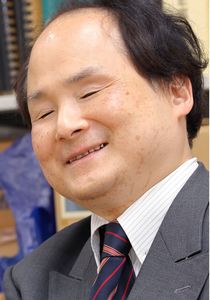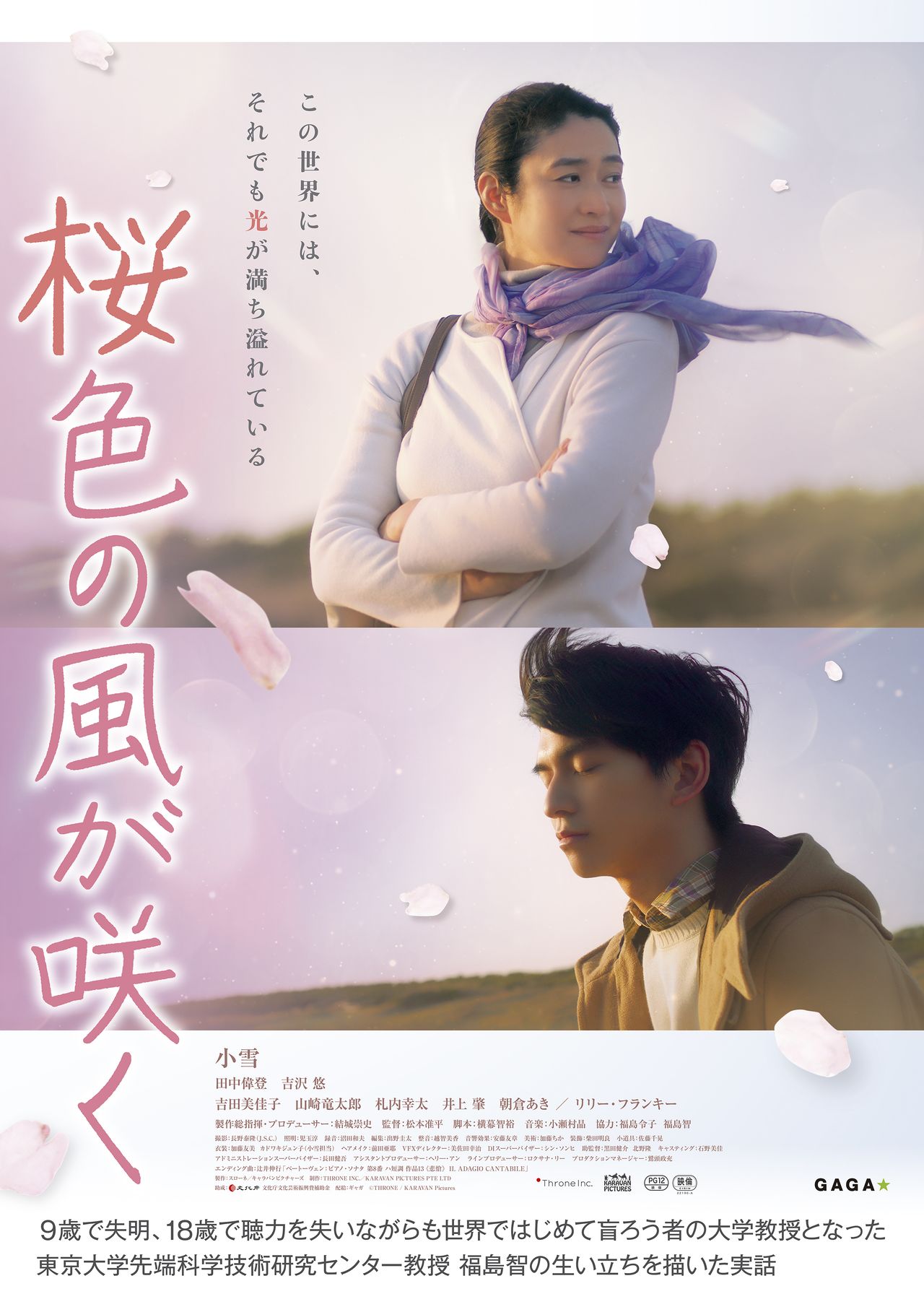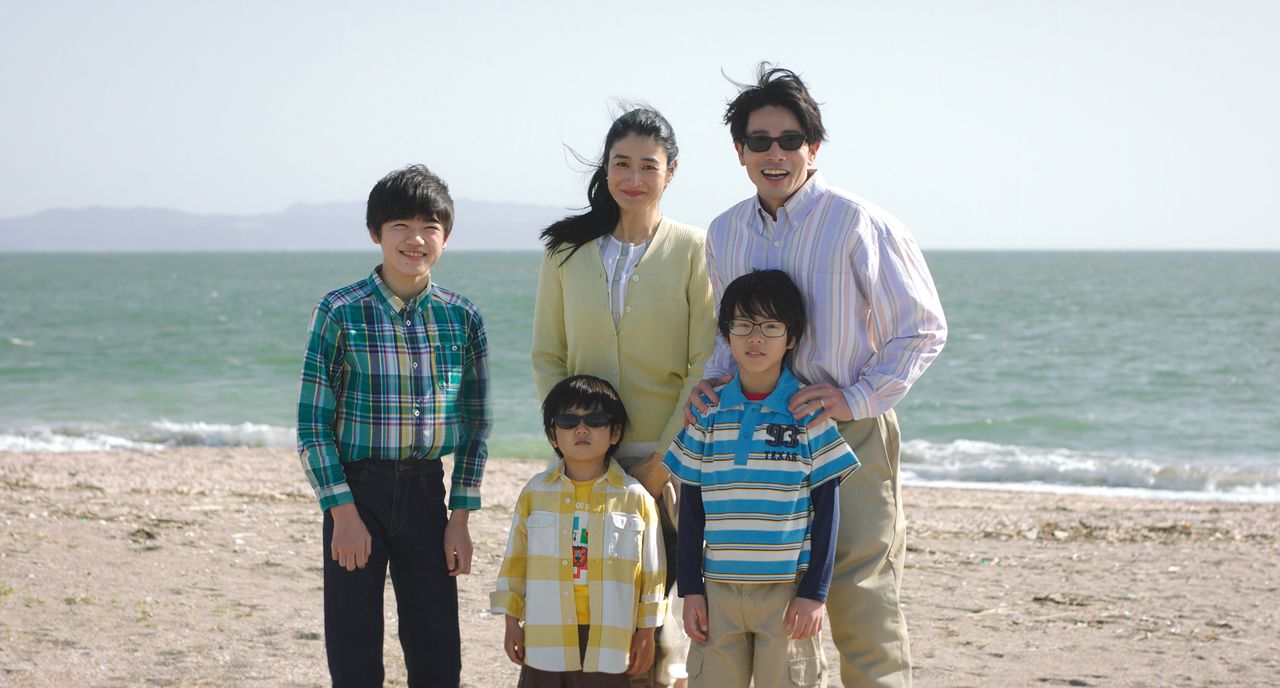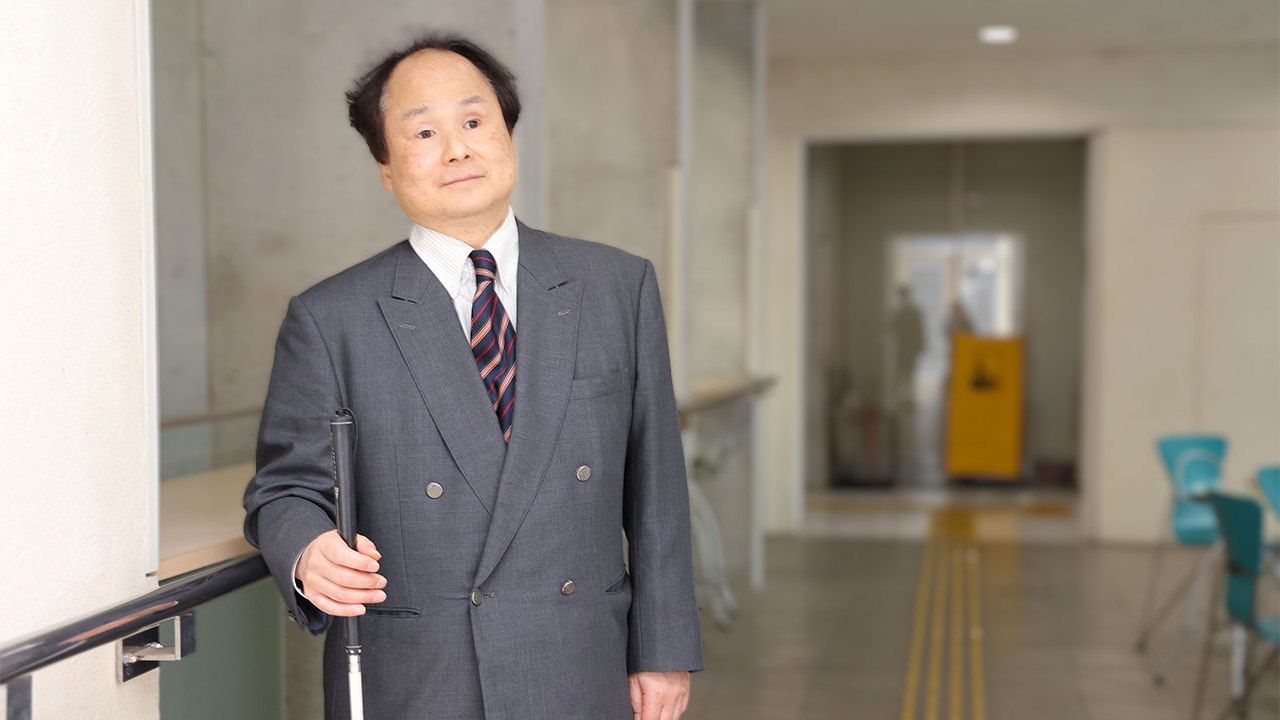
Communication and Connection: Fukushima Satoshi, the World’s First Deafblind Professor
Cinema- English
- 日本語
- 简体字
- 繁體字
- Français
- Español
- العربية
- Русский
Fukushima Satoshi can neither see nor hear. His deafblindness is not congenital—it occurred in stages. He lost sight in his right eye at the age of 3 and the left at 9, after which he lost hearing in his right ear at 14 and his left ear at 18. As a result, he still remembers the things he saw and heard before the onset of his condition. He is also able to speak unimpaired.
But the devastating loss of these faculties also caused him great distress. In addition, he went through the process of loss multiple times, culminating late in his adolescence—typically an emotional stage in life, no doubt compounding his suffering.
A new movie, Sakura iro no kaze ga saku (A Mother’s Touch), depicts Fukushima and his mother as he grows up and overcomes his difficulties. The first half of the 2022 film, directed by Matsumoto Junpei, recounts the anguish of Satoshi’s mother, played by Koyuki, as she cares for him after the discovery of his visual impairment as a toddler and his total blindness at age nine, while the second half focuses on Satoshi (Tanaka Taketo) in his late adolescence. As Satoshi comes to accept his condition, he becomes a cheerful and lively character, leaving his home in Hyōgo to attend a school for the blind in Tokyo, where he enjoys life in the school boarding house. But at 18, he loses his hearing, which had been a “safety net” for him until then. The film shows him overcoming this trauma and, with the support of his mother Reiko and his family, eventually becoming the first deafblind person in Japan to enter university.
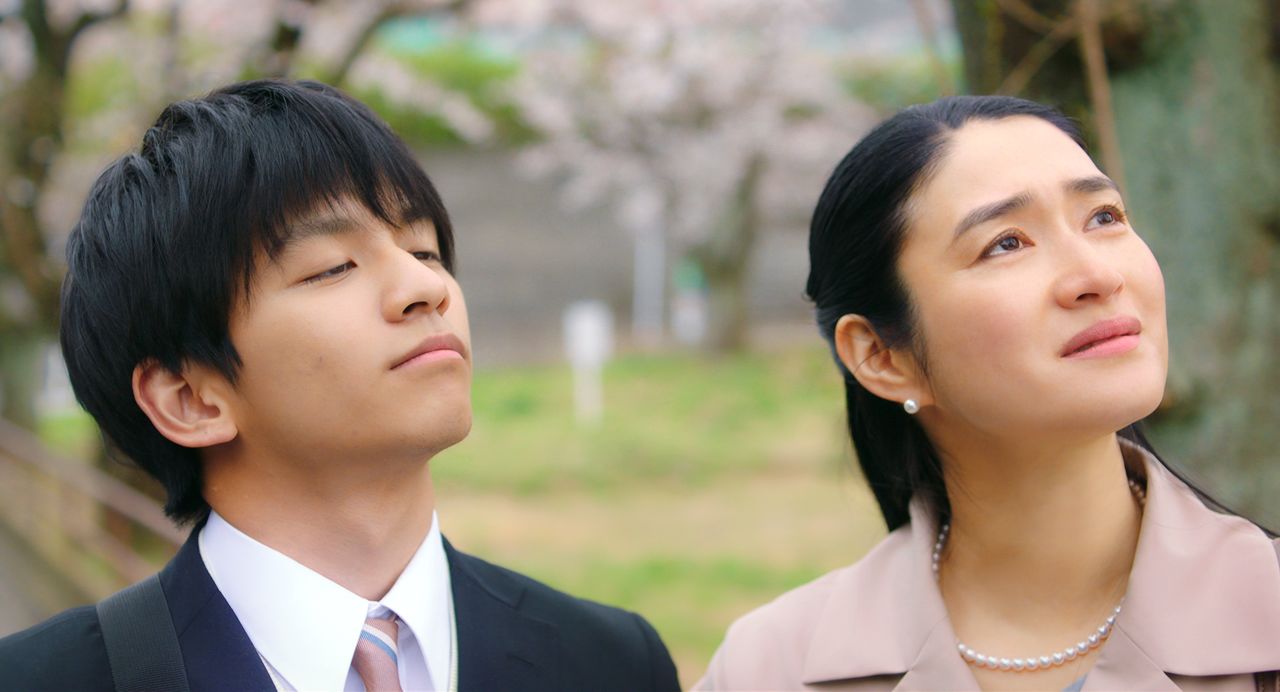
Katō Koyuki (stage name Koyuki) plays Fukushima’s mother, while Tanaka Taketo plays Fukushima as an adolescent. (© Throne/Karavan Pictures)
Redefining a Reason to Live
The basis for the movie was a book, Satoshi wakaru ka (Satoshi, Do You Understand?), authored by his mother, Fukushima Reiko. We asked Satoshi about the initial plans for the movie.
“When I first learned of plans to make the film, I was told that it would be based on my mother’s book, so naturally I had no objections. I collaborated in the overall writing of that book, although of course there were details from my early childhood that I knew little about. I think they could make the film precisely because it was my mother’s perspective.”
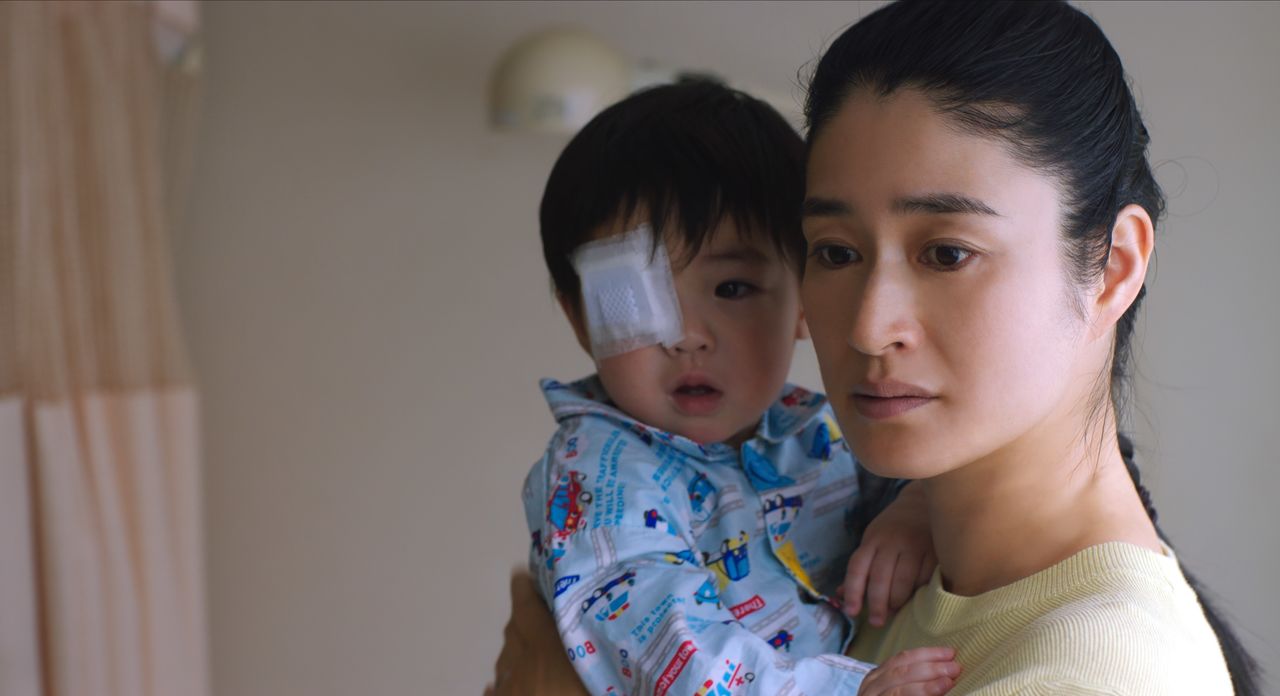
Satoshi lost sight in his right eye at the age of three. (© Throne/Karavan Pictures)
Because the main character is a mother raising a disabled child, A Mother’s Touch can garner the empathy of a wider audience. As her son, how did he feel about the portrayal of his mother?
“I’m sure it was very difficult for my mother, raising my two older brothers while doing all of the housework, which was depicted clearly in the film. With the making of the film, I realized that, for my mother, my loss of eyesight was a greater struggle than my loss of hearing. At the time, I was only nine, and while total blindness came as a shock, at least I still had my sense of hearing. Because I was young, I was able to adapt fairly easily.”
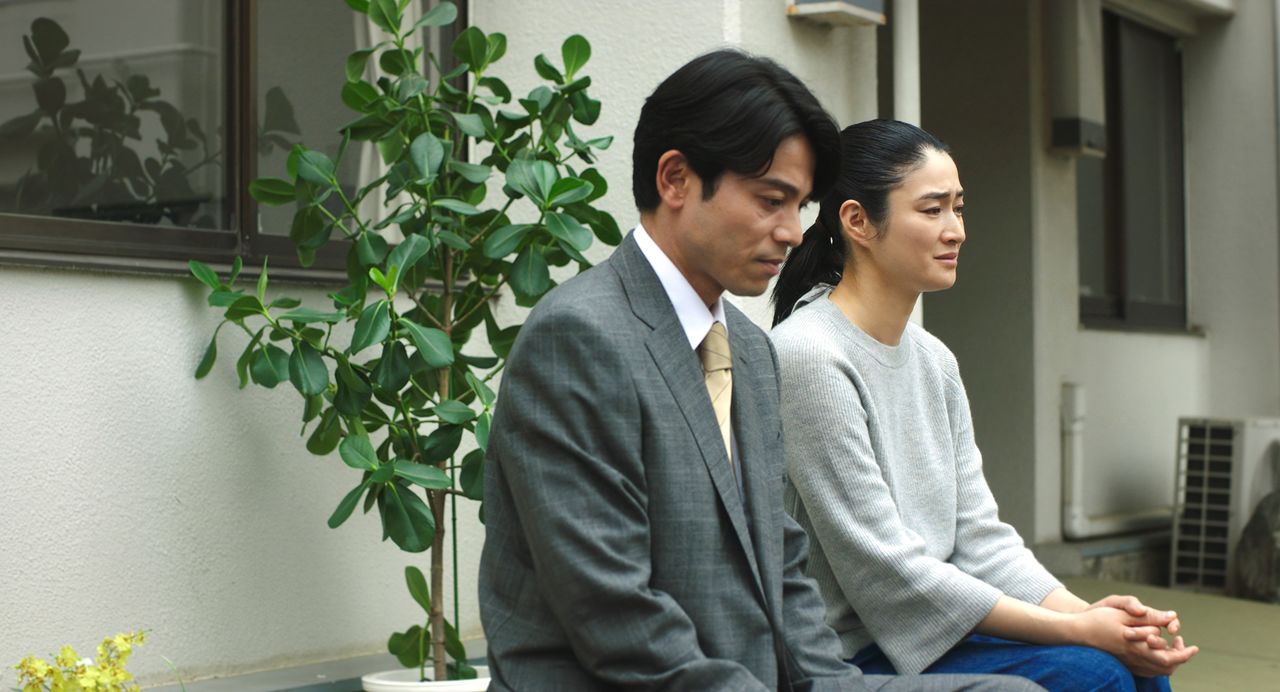
Fukushima Masami (played by Yoshizawa Hisashi) comforts his wife Reiko when she discovers that Satoshi has lost his sight. (© Throne/Karavan Pictures)
In the film, the young Satoshi indeed seems almost indifferent when he loses his sight early in the film. After losing his sense of hearing gradually between the ages of 14 and 18, the latter part of the film is set in the winter and spring of the year he turns 18.
“I was born on Christmas Day, 1962. Soon after I turned eighteen in 1980, my hearing declined rapidly. I became almost totally deaf in the first three months of 1981.”
Of all the challenges he faced during his adolescence, these three months were the most difficult. He took time off from the blind school and returned to his family’s home in Kobe. They endeavored to treat his condition through diet and exercise, but it failed to yield results.
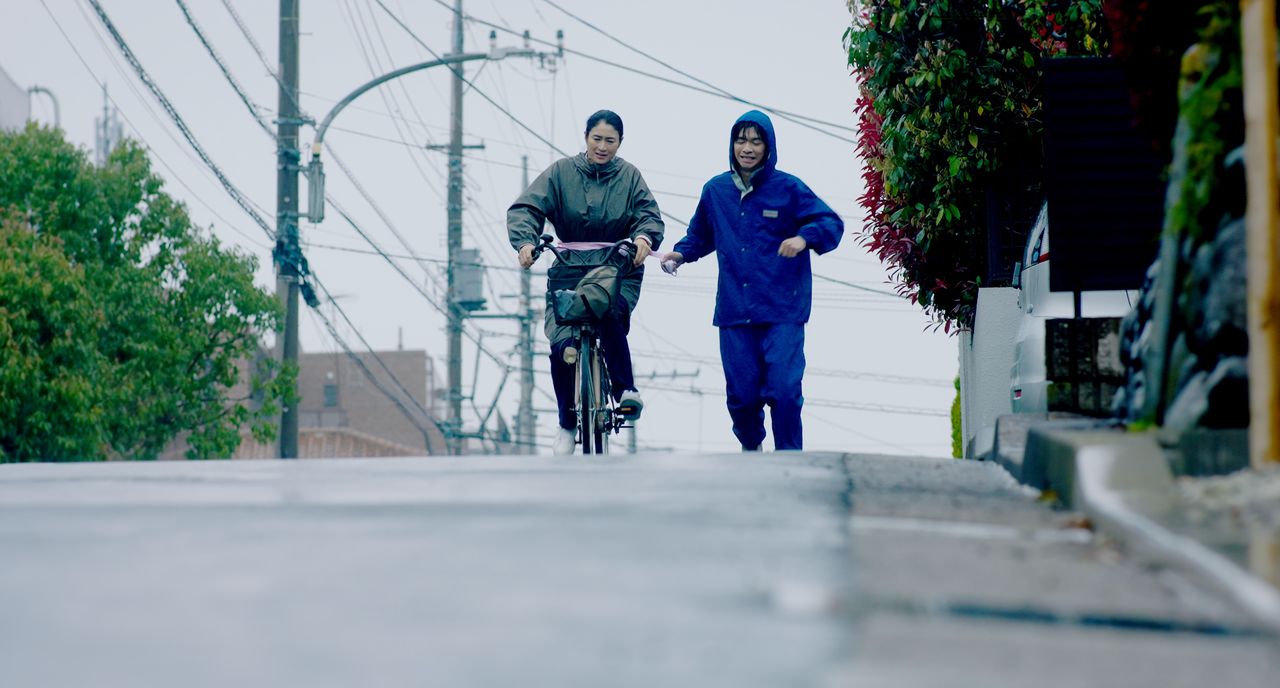
Reiko rides alongside Satoshi, her bicycle tied to his wrist, as he exercises to try to treat his condition. (© Throne/Karavan Pictures)
“Losing my sight in one eye at a time, then my hearing in one ear at a time, was astonishing. I couldn’t fathom the situation at first; it felt so cruel. In February 1981, I wrote in a letter to a friend that if life has a meaning, there must also be a meaning to this suffering. In fact, I hadn’t completely dealt with my situation at that stage, but having this realization helped me to gain comparative peace of mind.”
The Need to Stay Alive
Satoshi was buoyed by reading books in the Japanese braille script, writing his diary and letters, and thinking. Soon after he became deafblind, he read Franz Kafka’s Metamorphosis. It struck a chord with him, and there is a scene in the film where he reads it aloud.
“Reading the story of Gregor Samsa, who wakes to find he has become a huge insect, I could relate to the character. It seemed like what had happened to me. The next step was to decide how to live in that state.”
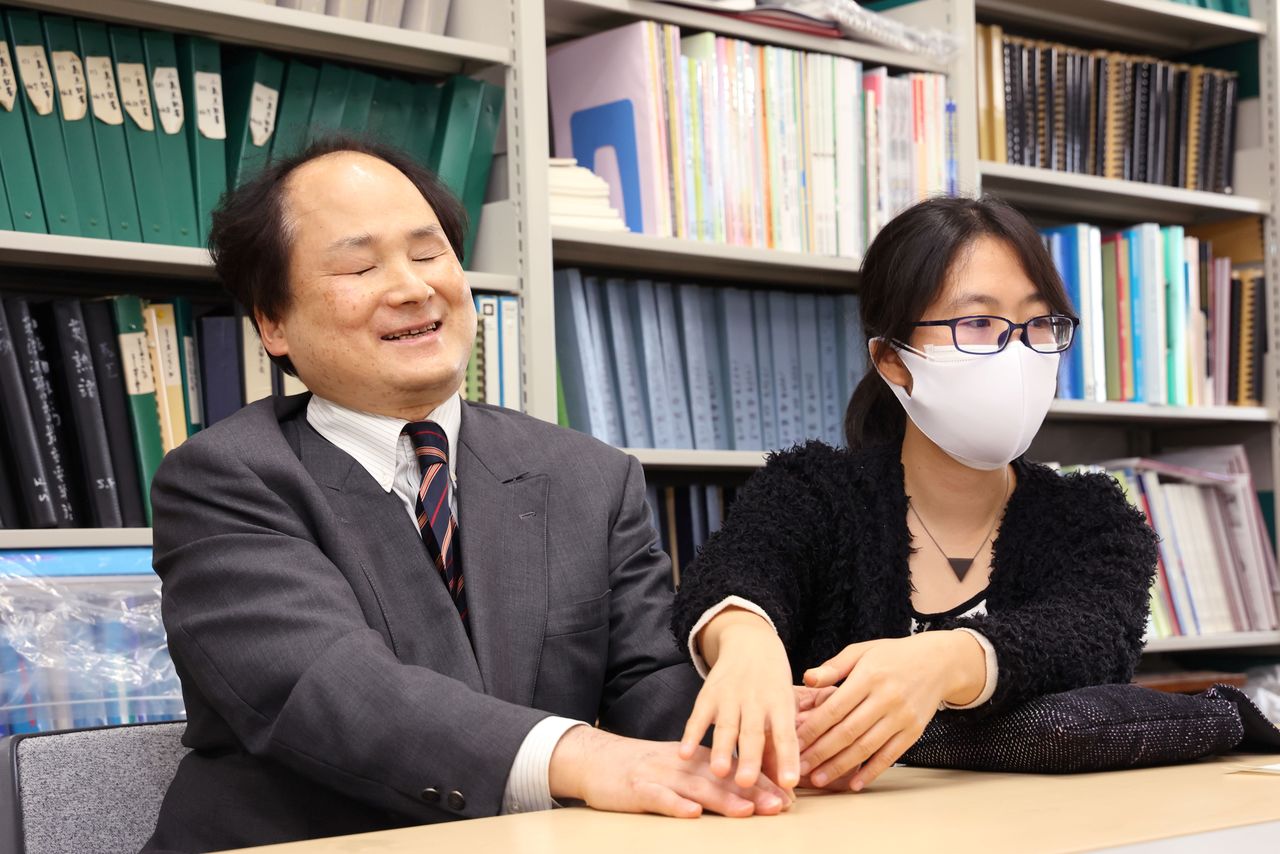
Fukushima Satoshi in his laboratory at the University of Tokyo Research Center for Advanced Science and Technology. To the right is finger braille interpreter Maeda Atsumi. (© Hanai Tomoko)
Another story that impressed him was “Haguruma” (trans. “Cogwheels”) by Akutagawa Ryūnosuke. Written by Akutagawa a few months before he took his own life, and believed to be semi-autobiographical, the tale is about a man who senses a series of omens of his death.
“It’s such a depressing story—just reading it makes you want to die. But in my case, it made me realize that I must stay alive. It actually calmed my nerves more than if I’d read a shallow, fun novel. I realized that if you sink to the ocean floor, you can’t go any lower. When I finally became totally deafblind, after the gradual deterioration of my sight and hearing from infancy, surprisingly, I felt a sense of relief. I knew things couldn’t get any worse. I realized this must be my starting point for living.”
While the film cannot fully convey the anguish Satoshi suffered each day, it depicts his descent into the abyss after losing his hearing, then clawing his way back to successfully enter university.
“In February 1981, I simply had a vague sense that, if I’d been given a mission in life, I must work to fulfill it. I felt that this suffering must be some part of that mission. In psychological terms, it was the stage of rationalization. I think I was trying to convince myself, to quell my feelings. I needed to think in this way to cope with my circumstances.”
Hope Was Born but then Receded
It was shortly after that Reiko hit upon the idea of finger braille. In this system, one person transmits codes directly to the fingers of the other, in the same way as typing the keys on a braille typewriter. Previously, Reiko used a braille typewriter and paper, but eliminating the typewriter enabled direct communication. This was how finger braille—now one standard means of communication for deafblind people—was invented.
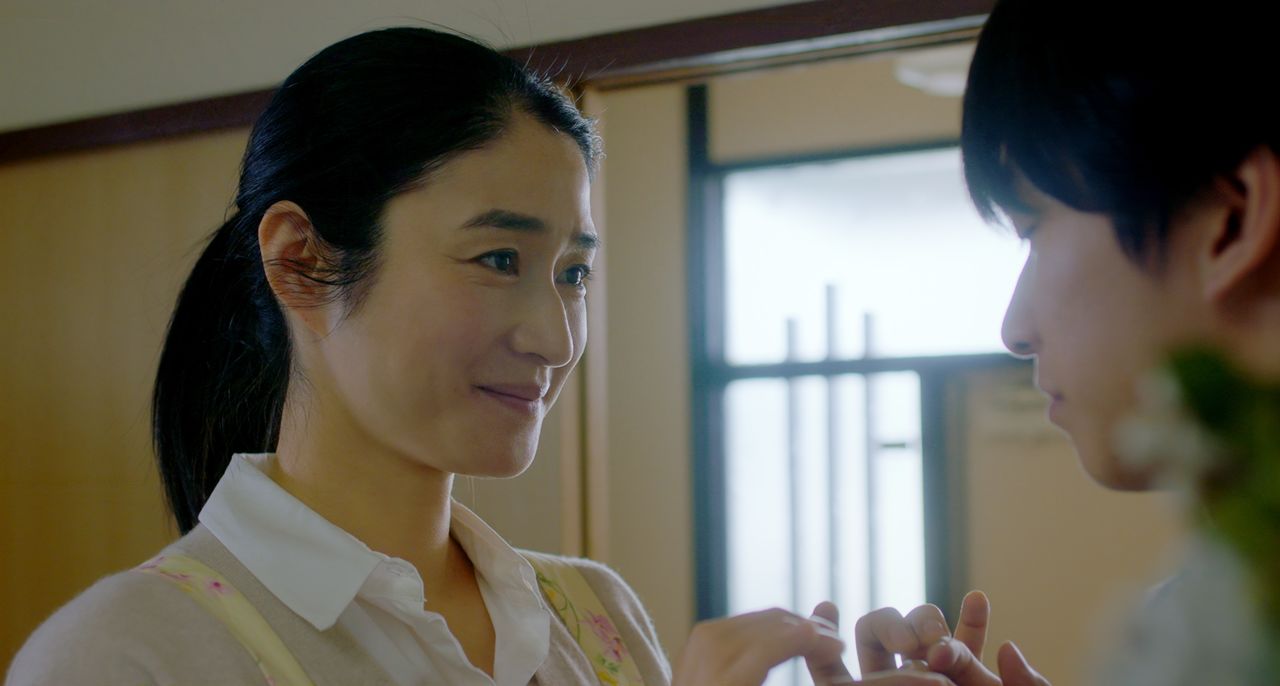
Reiko communicates with Satoshi after suddenly hitting upon the idea of finger braille. (© Throne/Karavan Pictures)
“That was at the start of March 1981. I think it was March 3, but I’m not sure, because I didn’t write it in my diary. I probably didn’t think it was that important at the time. I was quite conceited—I probably thought Mom had done something weird and I’d be able to think of a better method.”
Fukushima returned to the boarding house of the blind school in Tokyo at the end of March, starting his final school year, but now as a totally deafblind student. Those around him learned the finger braille method of communication and used it to talk to him and encourage him.
“People told me to try my best and not give up. Initially, that was great, but it wasn’t enough. After a while, they’d tire of our communication and leave. This happened often. I felt like I was locked in an underground prison, and now and then someone would appear outside my tiny window to express their sympathy. We’d talk for a bit, then they’d leave again. That’s how it felt. I had no idea what people around me were talking about. I couldn’t enjoy the same depth of communication as before, and I felt more and more isolated.”
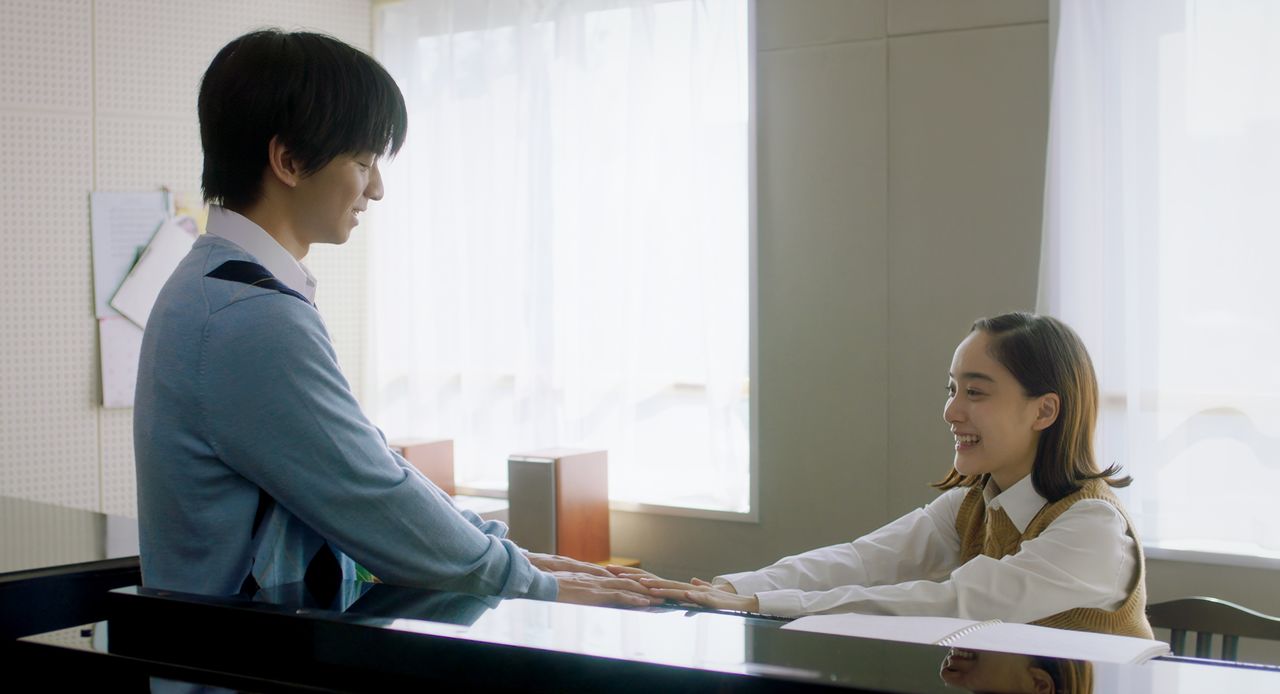
One of Satoshi’s great joys while he could still hear was listening to the piano being played by his classmate Masuda Manami (Yoshida Mikako). (© Throne/Karavan Pictures)
Expanding Horizons
Soon after, there was a turning point. About four months after Satoshi learned finger braille, one of his seniors at the school for the blind showed him a way it could be used for support interpreting. Instead of someone communicating directly with the deafblind person with finger braille, another person could act as an intermediary delivering the speaker’s messages. He sensed this might be a way to regain the deeper communication he had previously enjoyed. This impacted the future course of Fukushima’s life.
“At that stage, I still didn’t know what my mission in life should be. All I knew what that I’d probably go to university like my two older brothers had. For a time, I wrestled with what to do after that. But a succession of unusual encounters made me realize my life work was to somehow support other deafblind people, and there was no avoiding it.”

What went through Satoshi’s mind that spring day when he learned he had been accepted to university? (© Throne/Karavan Pictures)
In November 1981, a group was set up to support Fukushima as he made his way into university. This was the first form of the body that became the Japan Deafblind Association, established 10 years later. In 1987, Fukushima graduated from Tokyo Metropolitan University and entered graduate school. Working with the association, he helped to organize communication support for deafblind people modeled on what he had received.
“It was akin to building infrastructure—once the foundation was in place, the deafblind could once again participate in society. There are things we can’t do no matter how hard we try. That’s why a supporter is necessary. This was the starting point, after which Japan began to gradually implement appropriate welfare measures. It all started from the communication support that I’d personally received.”
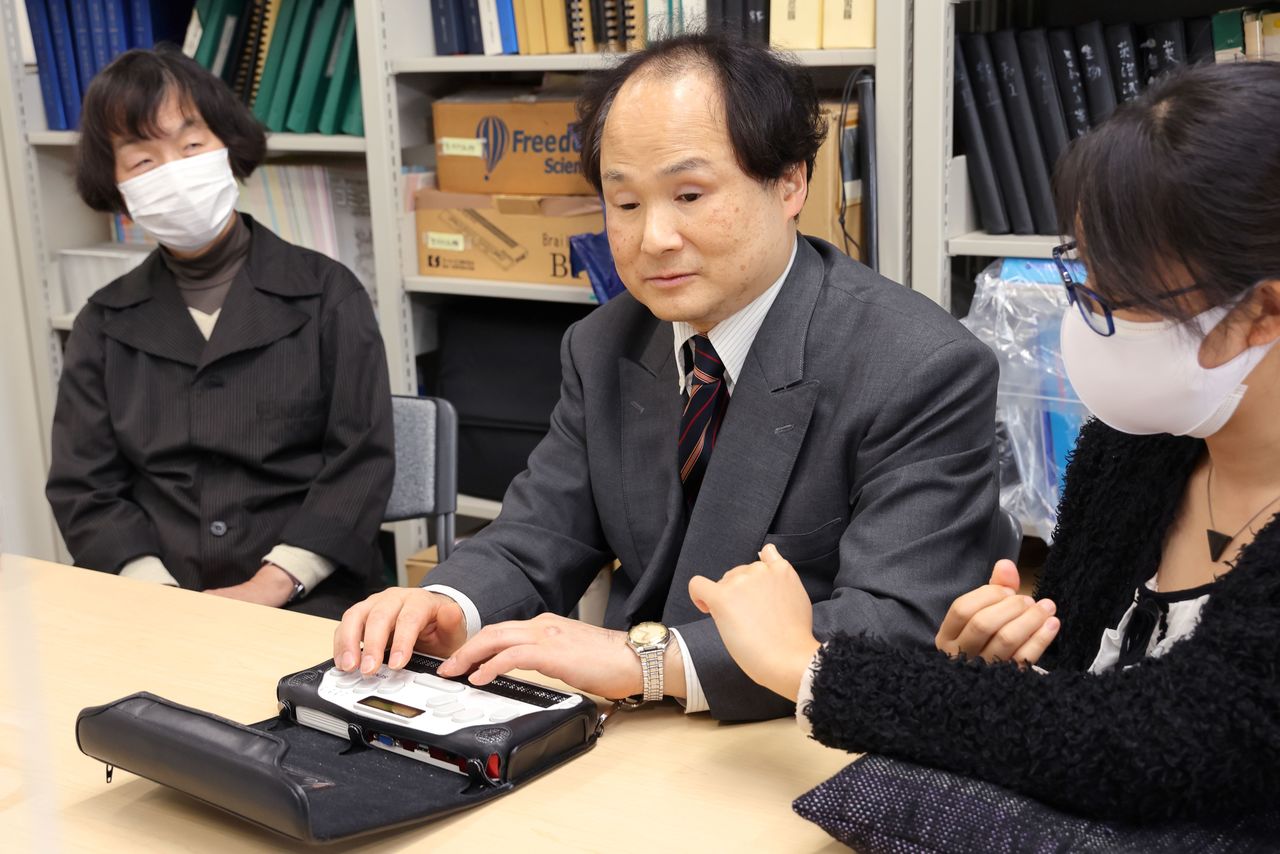
Fukushima demonstrates the use of the BrailleSense mobile device used to input braille and collate information. At left is finger braille interpreter Haruno Momoko. (© Hanai Tomoko)
Others Provide a Source of Light
People cannot live without communication. This seems obvious, but Fukushima became acutely aware of this truth when he lost both light and sound at 18. It felt like he had been cast alone into a cosmic void.
“When communication is cut off, it’s like a state of hunger and thirst that suffocates the spirit. To me, it’s like being deprived of food, water, and oxygen. In my condition, you can’t see beautiful scenery or hear lovely music, so of course it’s dull. But to be cut off from communication is something on a different level—you lose the proof that you exist in the world. When people interact with someone, they can see themselves in the light reflected from the existence of the other person.”
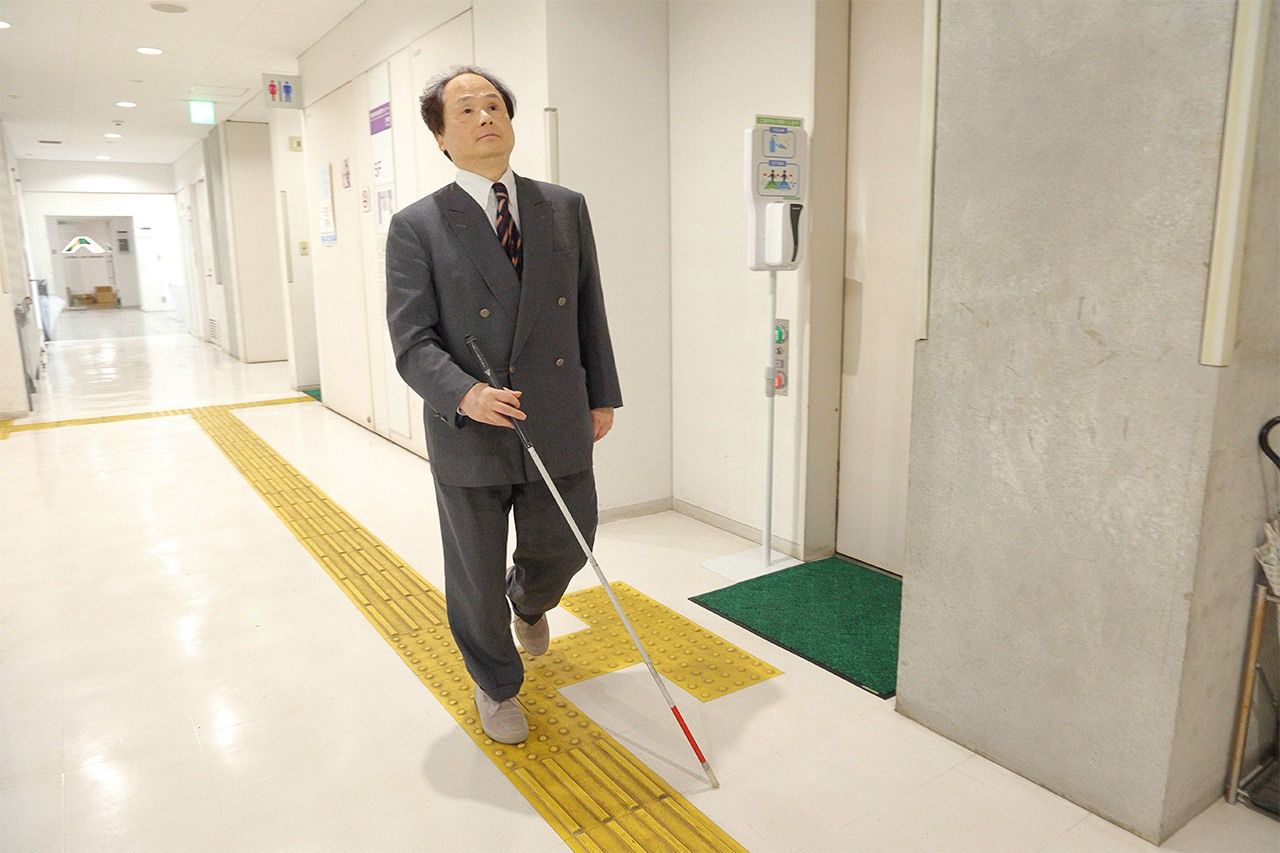
Professor Fukushima walking in the corridor of the University of Tokyo Research Center for Advanced Science and Technology. He uses the toilet unassisted. (© Hanai Tomoko)
Now Fukushima is engaged in research on barrier-free issues, as well as disability studies. At the same time, for over 20 years, he was regional representative for Asia with the World Federation of the Deafblind, a responsibility he handed on this fall. He is painfully aware that, worldwide, support available to deafblind people lags behind that for other disabled people. There are over 10 million deafblind people globally, and at least 14,000 in Japan.
“Some people need assistance just to live. Basic welfare measures fulfill the physiological requirements of eating, going to the toilet, and bathing, but being able to communicate, to acquire information, and to go outside freely are equally important. This is especially hard for deafblind people. If that is not possible, it’s like being in prison. Essentially, there are many innocent people who are imprisoned. I want them to be freed somehow. For this reason, I want us to advance the strongest public welfare measures possible.”
In Japan, overall welfare measures lag far behind other advanced countries, not only for the deafblind, but for all disabled people. Fukushima believes the root of the problem is the lack of social advancement of women.
“The two issues are the same, at their root. Unless we remove discrimination against women and achieve true gender equality, I do not believe we can realize a society where disabled persons and other minorities can exist freely. Japan was ranked 116th in the Global Gender Gap Report. Even though women account for half of humanity, and give birth to us all, there is still such gender imbalance. While this situation prevails, we will not eliminate discrimination against disabled people, who are around 10 percent of the population. As long as Japanese society continues to be centered on old men, disabled people will never see justice.”
Those same old men will eventually themselves be on the receiving end of support for the elderly. A Mother’s Touch ends with a verse from the poem “Inochi wa” (Life) by Yoshino Hiroshi, which Fukushima quotes now and then. “In life, we face deficiencies, which are met by other people.” Combined with what Fukushima has to say, it clearly reminds us of providence—there is nothing we can pass off as “other people’s problems.”
“It’s important to aim for a society where everyone can live, whatever challenges they face,” says Fukushima. “I believe that with this diversity, we create a strong and adaptable society. If we think in terms of cooperation rather than competition, competitiveness also improves as a result. I believe that when people with different perspectives, values, and conditions intermingle, even if it appears less efficient, we create a supple society that can adapt to a variety of situations.”
Film details
- Official website: https://gaga.ne.jp/sakurairo/
(Originally published in Japanese on November 17, 2022. Finger braille interpreters: Haruno Momoko and Maeda Atsumi. Photos © Hanai Tomoko. Interview and article by Matsumoto Takuya, Nippon.com.)
